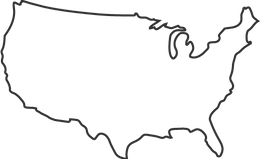
Migration Concepts
Close-up Read
Learn various migration-related terms and concepts in the reading below.
Introduction
Get an introduction to one of the most significant issues in the modern world: migration. Why do people migrate, and how do we categorize human migrations?

Migration Concepts
Migration, the movement of people from one country, place, or locality to another, is a social phenomenon that has affected the entire world.
People migrate for different reasons.

Immigration
Immigration is a specific type of migration,
i.e., the act of coming to live in a foreign country.
TO
You immigrate to a new country.



Emigration
The inverse of immigration is emigration,
i.e., the act of leaving one’s native country to settle in another.
FROM
You emigrate from your home country.
One approach to the study of migration argues that individuals are influenced by a number of “push-pull” factors, which encourage them to leave their place of origin while simultaneously pulling them toward a new destination.
For example, someone living in a region with high unemployment might move to an area with a high demand for labor. In another case, political instability or war might push migrants to leave their places of origin while at the same time they are pulled toward peaceful regions. When considering push-pull factors, it is helpful to imagine a cost-benefit analysis structure.

Push factors
Pull factors
Potential for Employment
A Safer Atmosphere
Greater Wealth
Fertile Land
Less Risk for Hazards
Political Security
Friends and Family
War and/or Civil Unrest
Unemployment
Lack of Safety
Poverty
Crop Failure
Drought and/or Famine
Natural Hazards
VS.
Although the push-pull framework can explain many types of migrations, it cannot solely explain why people choose to migrate to a specific city, region, or country.
How do we categorize human migrations?
Although the migration trajectory of each individual is unique, there are several basic kinds of migration patterns.

International Migration
Movement of people from one country to another.
This form of migration is highly dependent upon government regulations and economic activities, as well as the development of perceived opportunities abroad.
International migration might simultaneously consist of other migration forms. For example, a person leaving Tokyo for New York City represents a case of international migration as well as urban-urban migration, described below.
Domestic Migration
Movement of people within a country.


Rural-urban migration takes place when people in rural areas move to cities. This kind of migration is extremely common in developing nations where employment, health care, and educational services are available primarily in large cities. Rural-urban migration often leads to depopulation of the countryside and overpopulation in urban areas.
Urban-urban migration occurs when an individual moves from one city to another. Often, urban-urban migrations are the result of rural-urban migrations. Individuals often move from a rural area to a regional urban center before moving again to another urban area.
Cyclical migration is common for agricultural laborers whose work depends on the seasonal harvest. A cyclical migrant might work for three months in an agricultural region before moving to a city for a few months, followed by another seasonal job in agriculture.
Forced migration occurs when individuals leave their place of origin under the control of others. African slaves brought to the United States are considered forced migrants because slave-trading companies made them come to the United States.
Return migration occurs when individuals leave their place of origin but eventually return.
Remigration refers to a “double” migration. For example, some Japanese immigrants migrated first to Hawaii in the late 19th and early 20th century and then remigrated to the U.S. mainland.
U-turn migration refers to the migration of a migrant’s descendants (e.g., children, grandchildren) to the ancestral home of the migrant.
*All categories above can refer to either international or domestic migration.
Next Up:

The migrant considers the costs of moving (e.g., leaving family and friends, paying for moving expenses) against the perceived benefits (e.g., a better job, increased income, opportunities to meet new people) and eventually arrives at a conclusion to migrate or to remain in his or her current location based on a logical thought process.


